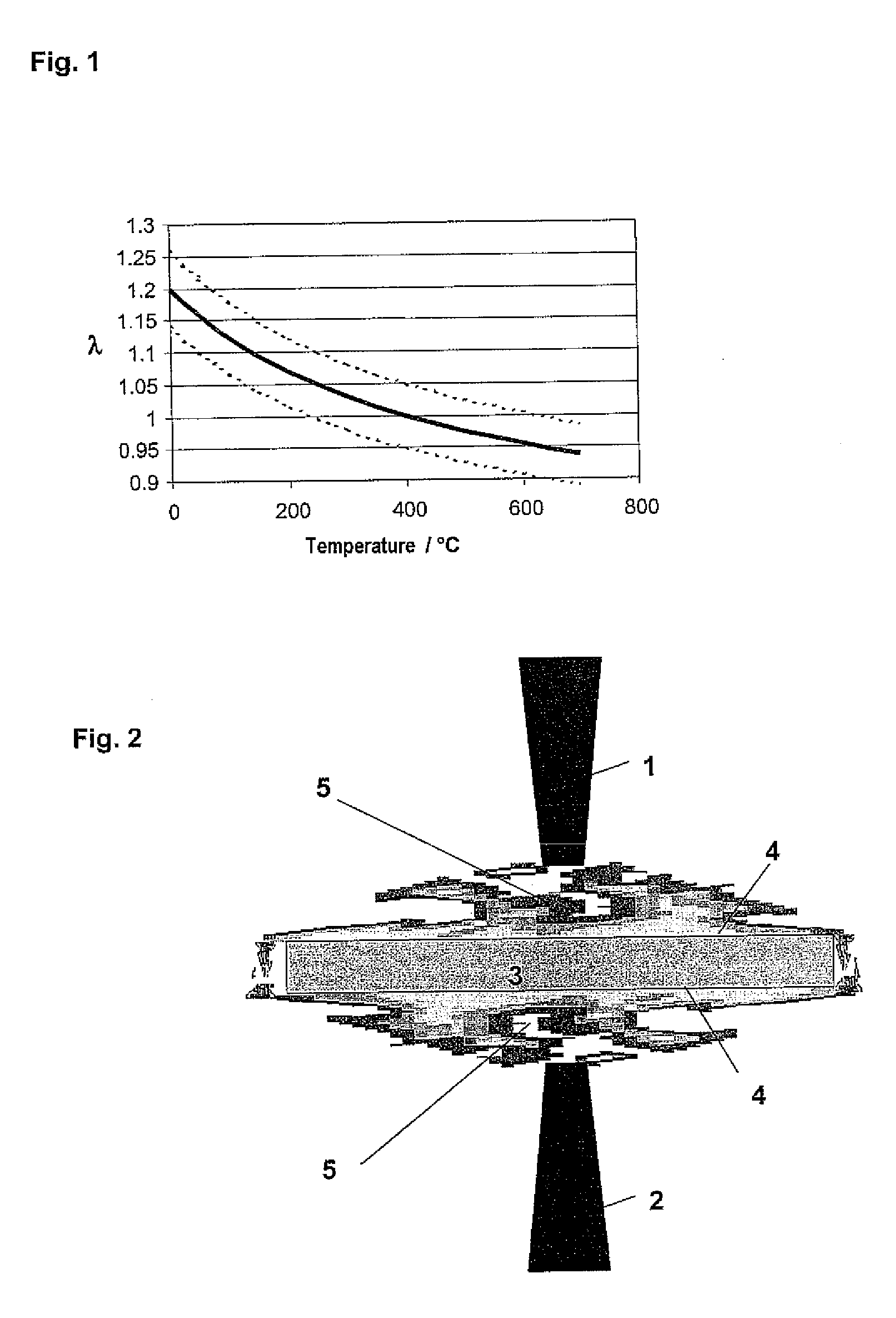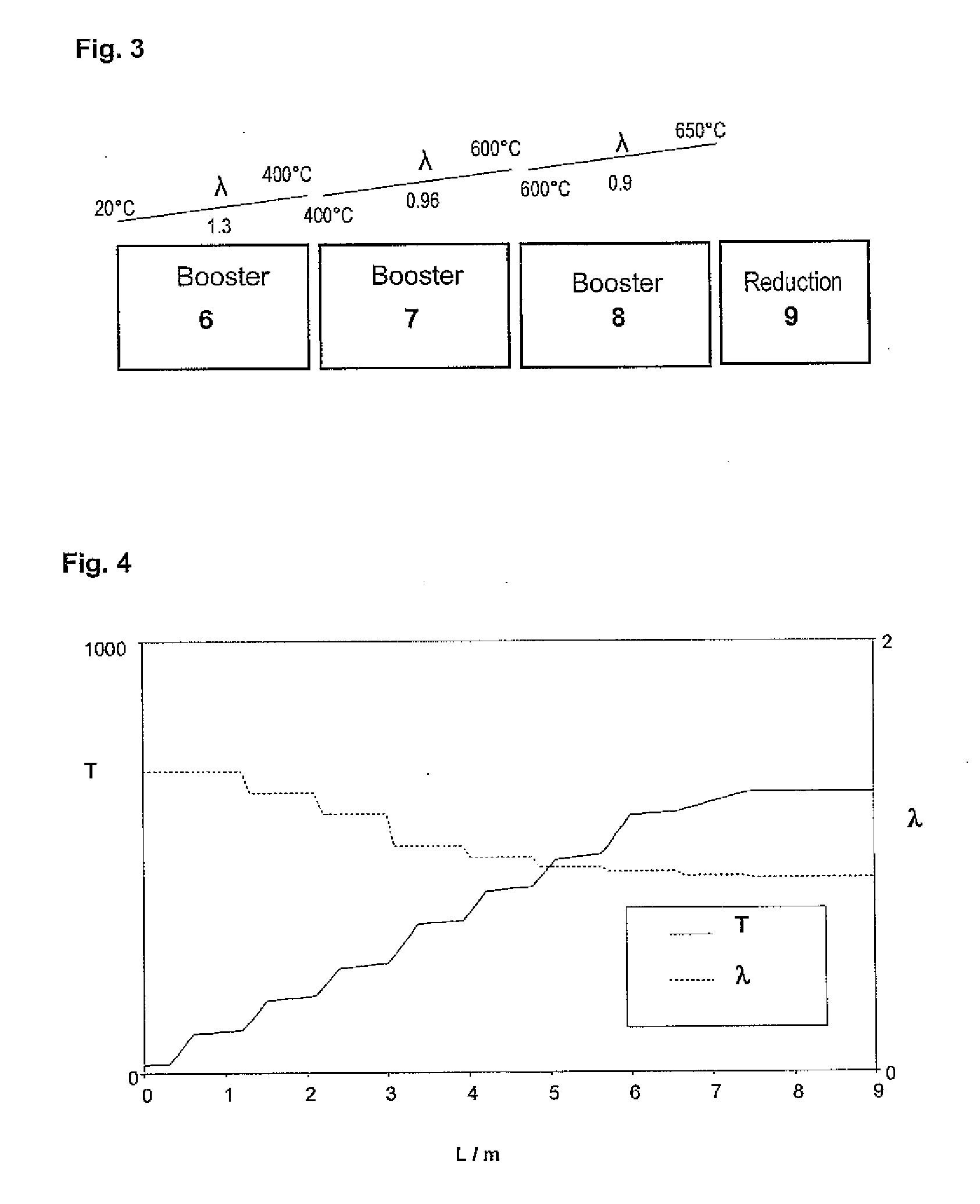Process for the heat treatment of steel products
- Summary
- Abstract
- Description
- Claims
- Application Information
AI Technical Summary
Benefits of technology
Problems solved by technology
Method used
Image
Examples
Embodiment Construction
[0038]FIG. 2 shows two booster burners 1, 2 which are used in accordance with the invention to heat a steel strip 3 from a starting temperature to a target temperature. The strip 3 is conveyed through a continuous furnace (not shown) in a direction perpendicular to the plane of the drawing. The burners 1, 2 are arranged perpendicular to the conveying direction and perpendicular to the strip surface 4. The flames 5 generated by the booster burners 1, 2 enclose the entire cross section of the steel strip 3. Within the flames 5, the stoichiometry is set in a defined way as a function of the starting temperature and the target temperature. The enclosing flames 5 according to the invention ensure a uniform, defined heating and treatment of the steel strip 3.
[0039]The process according to the invention is preferably used to clean and / or heat steel products in strip form in continuous furnaces. The invention offers particular advantages for the heating or pretreatment of steel products pri...
PUM
| Property | Measurement | Unit |
|---|---|---|
| Temperature | aaaaa | aaaaa |
| Temperature | aaaaa | aaaaa |
| Temperature | aaaaa | aaaaa |
Abstract
Description
Claims
Application Information
 Login to View More
Login to View More - R&D
- Intellectual Property
- Life Sciences
- Materials
- Tech Scout
- Unparalleled Data Quality
- Higher Quality Content
- 60% Fewer Hallucinations
Browse by: Latest US Patents, China's latest patents, Technical Efficacy Thesaurus, Application Domain, Technology Topic, Popular Technical Reports.
© 2025 PatSnap. All rights reserved.Legal|Privacy policy|Modern Slavery Act Transparency Statement|Sitemap|About US| Contact US: help@patsnap.com



